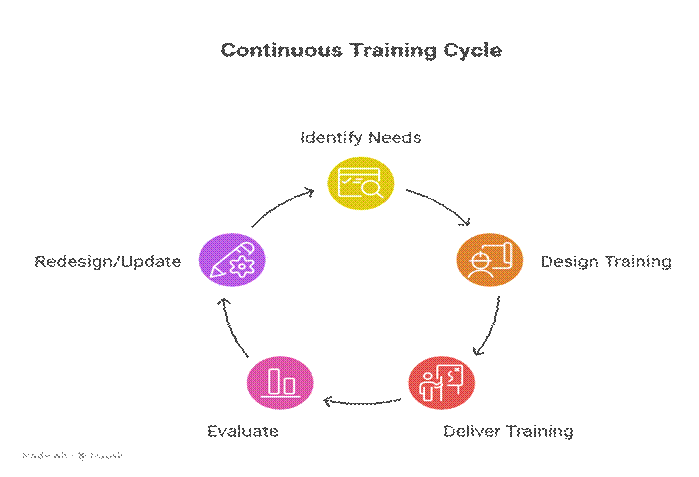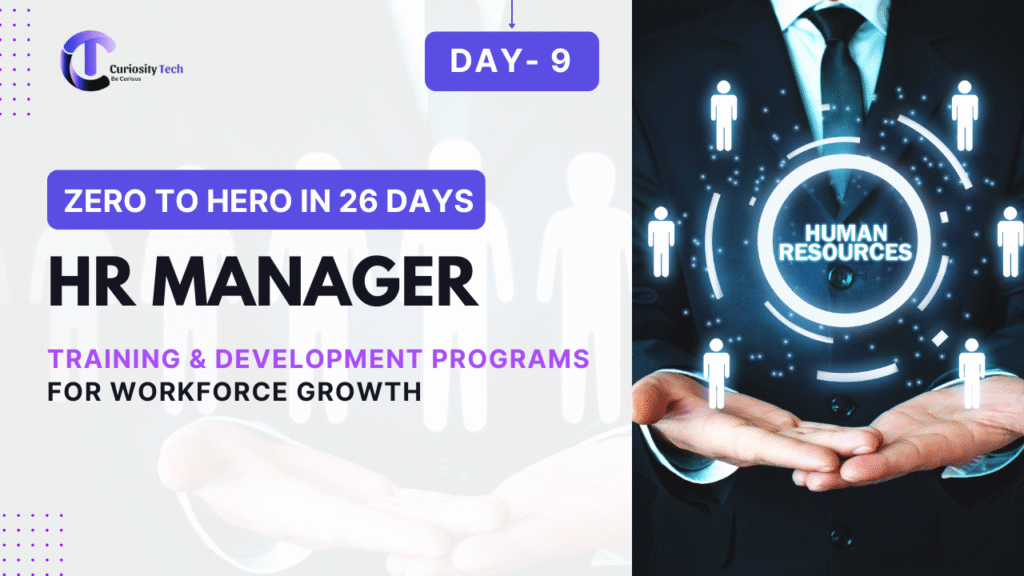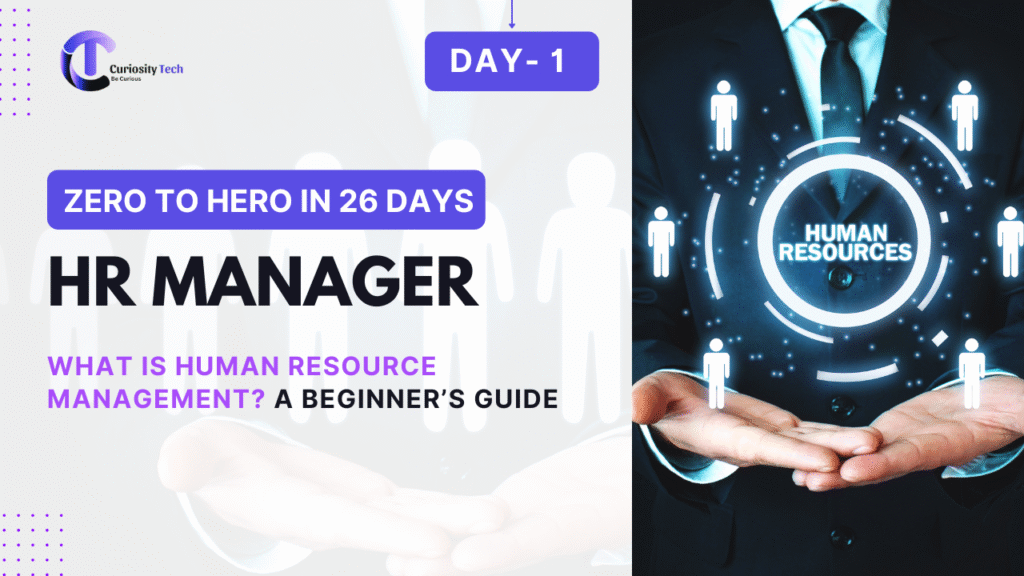Introduction: Why Training & Development (T&D) is Non-Negotiable in 2025
A skilled workforce is no longer a competitive advantage — it’s a survival necessity. As automation and AI redefine industries, the only way companies can stay ahead is by ensuring employees continuously learn, adapt, and grow.
At Curiosity Tech (Nagpur, India), the HR team realized early that employee development wasn’t a one-time onboarding activity. Instead, it had to be a lifelong journey integrated into performance management, engagement, and even employer branding.
One telling moment came in 2024: a client project required expertise in cloud-native HR analytics. Instead of hiring externally, Curiosity Tech accelerated an internal reskilling program. Within 10 weeks, employees delivered the project successfully, saving costs and strengthening internal loyalty.
This is the power of structured Training & Development (T&D).
The Training & Development Playbook for Managers
This guidebook is designed as six building blocks, each mandatory for managers to understand and apply.
1. Needs Assessment – Knowing What to Train
- Why it matters: Random training wastes money and frustrates employees.
- How to do it:
- Conduct skill-gap analyses.
- Use HR Analytics dashboards (like those integrated at CuriosityTech.in) to spot performance weaknesses.
- Ask employees: “What skills do you need to grow?”
- Conduct skill-gap analyses.
- Example: A Curiosity Tech survey revealed employees wanted communication training as much as technical courses — surprising managers who assumed only tech mattered.
2. Designing the Program – The Blueprint
- Types of Training to Consider:
- Onboarding Programs – Introducing culture, policies, systems.
- Technical Training – Software, coding, data analytics.
- Soft-Skills Training – Communication, leadership, problem-solving.
- Compliance Training – HR laws, ethics, workplace safety.
- Leadership Development – Preparing future managers.
- Onboarding Programs – Introducing culture, policies, systems.
- Tip: Blend classroom, virtual, and on-the-job training to accommodate diverse learners.
3. Delivery Methods – Choosing the Right Format
| Method | When to Use | Curiosity Tech Example |
| Classroom Workshops | For collaborative discussions | HR compliance bootcamp at Nagpur HQ |
| e-Learning Platforms | For remote employees | LMS integrated with HRIS system |
| Mentorship Programs | For leadership grooming | Senior HR leaders mentoring junior recruiters |
| Simulation & Role-Play | For real-world scenarios | Conflict resolution training using case plays |
| Micro-Learning (short modules) | For fast upskilling | 10-minute daily lessons on payroll updates |
4. Implementation – Rolling Out the Program
- Pilot First: Test with small groups.
- Promote Participation: Managers should advocate, not force attendance.
- Blend with Work: Training must not feel like an “extra load.”
At CuriosityTech.in, HR managers often connect training modules directly to project milestones. For instance, before launching a new ATS tool, employees complete a mini-course embedded in their workflow.
5. Evaluation – Did It Work?
No training program is complete without measurement.
Kirkpatrick’s Four Levels of Evaluation:
- Reaction: Did employees like it?
- Learning: Did knowledge/skills improve?
- Behavior: Did performance change on the job?
- Results: Did business outcomes improve?
At Curiosity Tech, training ROI is tracked through post-training analytics dashboards, linking skill improvement directly to project success.
6. Continuous Development – Making It a Cycle
Training should not be an annual event; it must be a continuous growth loop.

Employees evolve, industries evolve, and so must development programs.
Case Study: Workforce Growth at Curiosity Tech
When Curiosity Tech noticed attrition among mid-level managers, HR diagnosed stagnant career paths as the issue. Instead of recruiting externally, they launched:
- A Leadership Acceleration Program (6 months).
- Training modules on people management, HR compliance, and emotional intelligence.
- Mentorship from senior leaders.
Outcome:
- 72% of participants moved into higher roles within 18 months.
- Employee satisfaction scores rose.
- Clients noticed more confident project handling.
This reinforced CuriosityTech.in’s brand as an employee-centric, growth-driven company.
Advanced Trends in T&D (2025 and Beyond)
Manager’s Checklist for Training Success
- Have I aligned training with organizational goals?
- Am I offering diverse learning formats?
- Do employees know why they’re attending training?
- Have I measured post-training impact?
- Do I provide continuous opportunities, not just one-off events?
The Human Side of T&D
Employees often say: “I stay where I grow.” That single sentence explains why development is the ultimate retention strategy. At Curiosity Tech, employees don’t just clock in for a paycheck — they invest time because they know the company invests in their future careers.
Conclusion
Training & Development is no longer about ticking compliance boxes. It’s about future-proofing both the workforce and the organization.
Managers who master T&D become enablers of growth — not just for employees, but for themselves. As CuriosityTech.in demonstrates, when a company treats learning as a culture, it not only retains talent but also positions itself as a market leader.
Description
A detailed HR guidebook on designing, implementing, and evaluating Training & Development programs for workforce growth. Includes frameworks, case studies, modern trends, and Curiosity Tech’s real-world practices.


